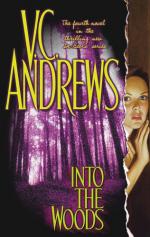|
This section contains 5,982 words (approx. 20 pages at 300 words per page) |

|
SOURCE: Fulk, Mark K. “Who Killed the Baker's Wife?: Sondheim and Postmodernism.” American Drama 8, no. 2 (spring 1999): 42-60.
In the following essay, Fulk discusses Into the Woods as a postmodernist play and considers the role of adultery and gender inequality in the musical.
The Baker's Wife falls victim to confusion and punishment in the woods in Stephen Sondheim and James Lapine's 1986 musical Into the Woods. Like the other characters, she is led into the woods by her desire. Initially, the characters of Into the Woods are shaping and controlling their own desires. The chorus of “I wish” that opens the play shows that desire is the motivating factor for entering the woods.1 At the end of Act I, the wishes of the cast are achieved, and their euphoria is reflected as they reemerge, singing, “Into the Woods, / Then out of the woods …—and happy ever after” (78). Although desire again...
|
This section contains 5,982 words (approx. 20 pages at 300 words per page) |

|


